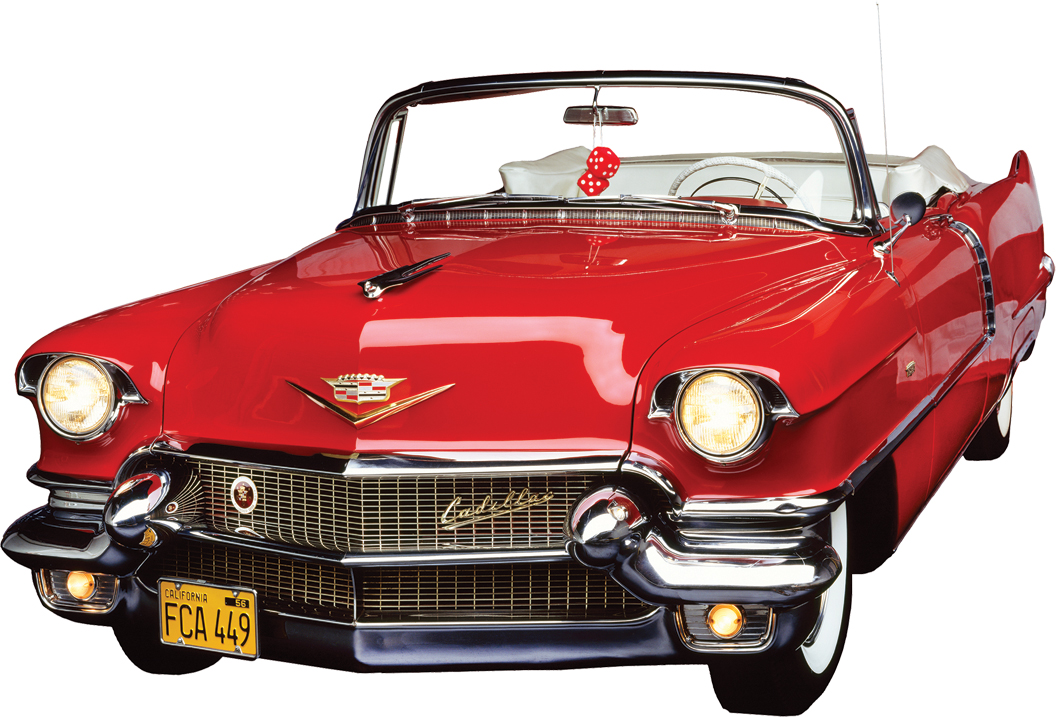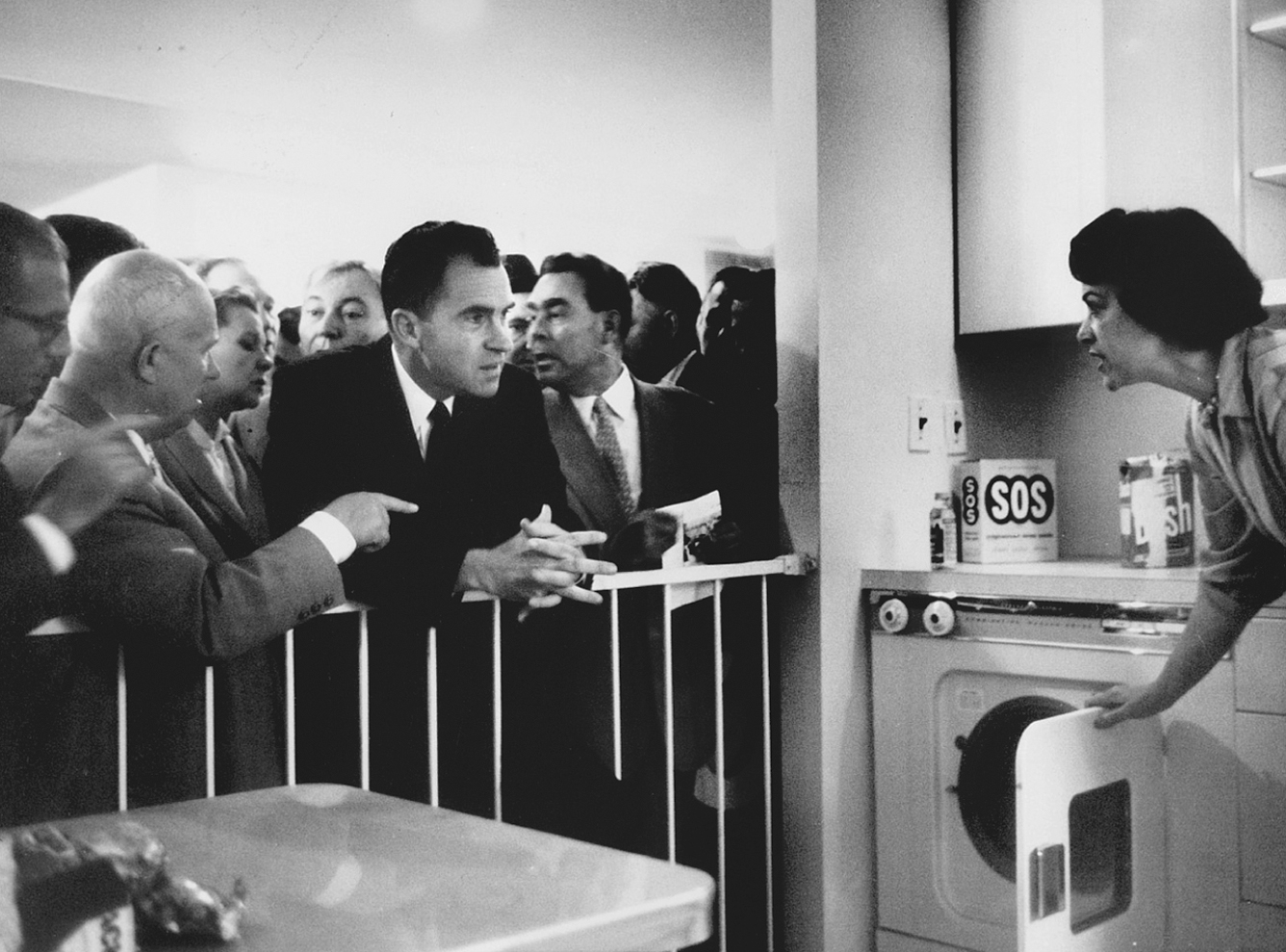The Politics and Culture of Abundance, 1952–1960

Printed Page 736 Chapter Chronology
The Politics and Culture of Abundance, 1952-1960

QUICK START
Quickly learn what is important in this chapter by doing the following:
- READ the Chapter Outline to see how the chapter is organized.
- SKIM the Chronology to see what will be covered.
When you are ready, download the Guided Reading Exercise, then read the chapter and the Essential Questions for each section and complete the Guided Reading Exercise as you go. Then use LearningCurve and the Chapter Review to check what you know.
Trailed by reporters, Vice President Richard M. Nixon led Soviet premier Nikita Khrushchev through the American National Exhibition in Moscow in July 1959. The display of American consumer goods was part of a cultural exchange that reflected a slight thaw in the Cold War after Khrushchev replaced Stalin. In Moscow, both Khrushchev and Nixon seized on the propaganda potential of the moment. As they examined the display, they exchanged a slugfest of words and gestures that reporters dubbed the kitchen debate.
Showing off a new color television set, Nixon said the Soviet Union "may be ahead of us ...in the thrust of your rockets," but he insisted to Khrushchev that the United States outstripped the Soviets in consumer goods. Nixon linked capitalism with democracy, asserting that the array of products represented "what freedom means to us ...our right to choose." Moreover, Nixon boasted that "any steelworker could buy this house," as they walked through a model of a six-room ranch-style home. Khrushchev retorted that in the Soviet Union "you are entitled to housing," whereas in the United States the homeless slept on pavements.

Nixon declared that the household appliances were "designed to make things easier for our women." Khrushchev disparaged "the capitalist attitude toward women," maintaining that the Soviets appreciated women's contributions to the economy, not their domesticity. Nixon got Khrushchev to agree that it was "far better to be talking about washing machines than machines of war," yet Cold War tensions surfaced when Khrushchev later blustered, "We too are giants. You want to threaten — we will answer threats with threats."
In fact, the Eisenhower administration (1953–1961) had begun with threats, and the two nations engaged in an intense arms race throughout the decade and beyond. During the 1952 campaign, Republicans had vowed to roll back communism and liberate "enslaved" peoples under Soviet rule. In practice, President Dwight D. Eisenhower pursued a containment policy much like that of his predecessor, Harry S. Truman, though Eisenhower relied more on nuclear weapons and on Central Intelligence Agency (CIA) secret operations against left-leaning governments. Yet as Nixon's visit to Moscow demonstrated, Eisenhower seized on political changes in the Soviet Union to reduce tensions in Soviet-American relations.
Continuity with the Truman administration also characterized domestic policy. Although Eisenhower favored corporations with tax cuts and resisted strong federal efforts in health care, education, and race relations, he did not try to demolish the New Deal. He even extended the reach of the federal government with a massive highway program.
Although poverty clung stubbornly to one of every five Americans, the Moscow display testified to the unheard-of material gains savored by many in the postwar era. Cold War weapons production spurred the economy, whose vitality stimulated suburban development, contributed to the growth of the South and Southwest (the Sun Belt), and enabled millions of Americans to buy a host of new products. As new homes, television sets, and household appliances transformed living patterns, Americans took part in a consumer culture that celebrated the family and traditional gender roles, even as more and more married women took jobs outside the home.
The Cold War and the economic boom helped African Americans mount the most dramatic challenge of the 1950s, a struggle against the system of segregation and disfranchisement that had replaced slavery. Large numbers of African Americans took direct action against the institutions of injustice, developing the organizations, leadership, and strategies to mount a civil rights movement of unprecedented size and influence.